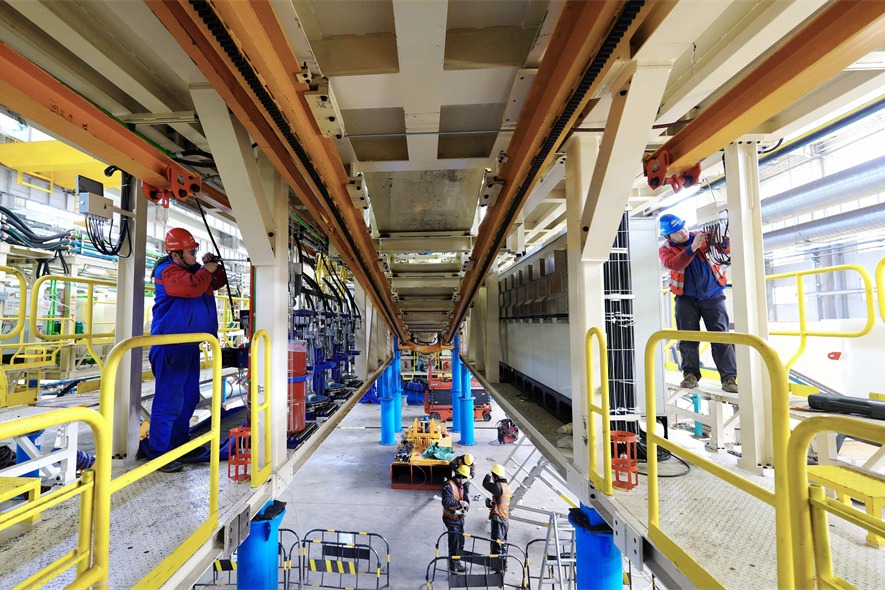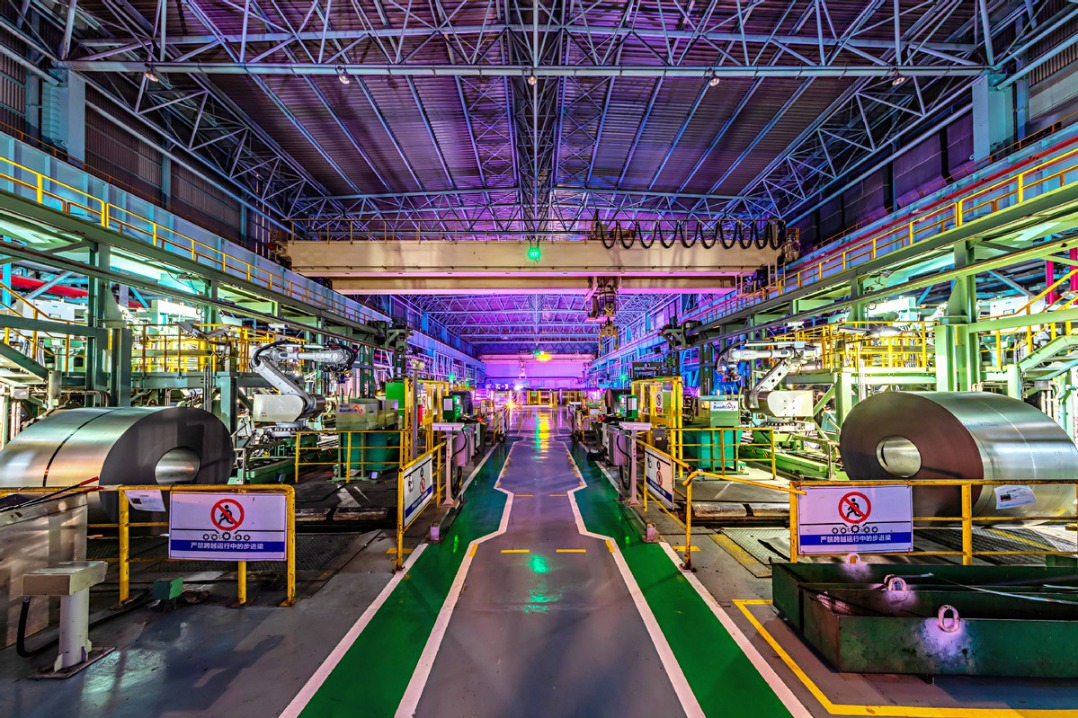Expats seek to beat smog with technology
中国日报网 2014-01-17 10:10

Several independent Dutch inventors are among a handful of foreigners who have found unique ways to combat China's smog, as air pollution in Shanghai this winter soared to historic highs, making facemasks a seasonal fashion accessory.
The hazardous haze compelled Shanghai resident Niels Woelders to design an elaborate air-filtration system in his apartment that he claims is second-to-none.
It has also prompted one Chinese-Australian couple in the city to chase investors for a pollution-themed TV show.
Meanwhile, designer Daan Roosegaarde has been building a giant machine dubbed "smog" that he claims will be able to vacuum the noxious fumes from Beijing's skies.
If successful, it would rank as the world's largest air purifier.
Heavy pollution made for distressing headlines throughout 2013. It grounded flights in cities such as Harbin, the capital of Heilongjiang province, which is famous for its monolithic ice sculptures. It shuttered thousands of schools and construction sites in Beijing. It also ramped up sales of air purifiers on Internet retailer Tmall.
Along with the stronger yuan, it was blamed for inbound tourism to the capital falling more than 10 percent in 2013.
Some 1,100 km south in Shanghai, the air quality index raced off-grid for several days in December - even exceeding 500, a reading the United States consulate classifies as "beyond index" - causing more expats to reconsider their long-term plans.
The city responded by closing factories and ordering one in three government-used cars off the road.
Three months earlier, at least one World Health Organization body officially acknowledged outdoor pollution as a carcinogen for the first time.
For Woelders, an electrical engineer with several patents to his name, relocating was less of an option because he has a Chinese wife and child here. Instead, the resourceful Dutchman built an air-cleaning unit, which he claims is more effective at eliminating harmful chemicals and gases than most of the products consumers can buy.
It operates on a seven-stage process that even filters out bacteria and viruses.
"My son's kindergarten has a rule about needing to keep the window open to let in air," he said. "But if you open the window, you may as well switch off your air purifier because the pollution will enter faster than the purifier can clean it.
"My product is way more beneficial than most of what's available because my main goal is to solve this problem, not make a large profit."
Woelders said his do-it-yourself system took him about a year to build. It cost over 60,000 yuan ($9,840) and required the use of more than 170 meters of tubing.
He also spent 20,000 yuan on a portable air-pollutant tester, and last week forked out another 15,000 yuan on a secondhand piece of equipment from Sweden that produces thermal images showing the flow of air in rooms to detect any potential leaks.
"The main problem with a lot of the products on the market seems to be that they are better at dealing with PM2.5 [particulate matter small enough to penetrate the lungs], but poor when it comes to PM0.3 and gases," he said.
He said his invention can remove all PM2.5 and is also "20 to 25 times better" than other products at eliminating PM0.3, small pollutants that can burrow deeper into the lung tissue. It is equipped with enough active carbon to trap gases easily, as well as other systems to help eliminate excess build-up of carbon dioxide, which humans create naturally by breathing.
These systems can both detoxify other gases that are produced at home when cooking or using air-conditioning units, and provide a healthy supply of oxygen so users do not, for example, wake up with headaches.
He hopes to have a marketable prototype completed this year.
Despite such stopgap measures, real change can only come from the government, the industrial sector and consumers.
The government aims to reduce PM2.5 density in North China by a quarter by 2017 by drawing on an allocated budget of 5 billion yuan, Shanghai Daily reported.
(中国日报网英语点津 Helen 编辑)

About the broadcaster:
Nelly Min is an editor at China Daily with more than 10 years of experience as a newspaper editor and photographer. She has worked at major newspapers in the U.S., including the Los Angeles Times and the Detroit Free Press. She is also fluent in Korean.

















 英语点津微信
英语点津微信 双语小程序
双语小程序